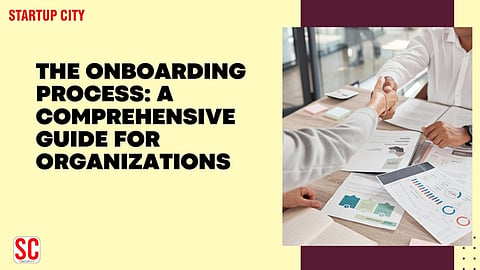

Onboarding is a critical process that sets the stage for a new employee's success within an organization. It encompasses all activities aimed at integrating new hires into the company culture, familiarizing them with their roles, and equipping them with the tools they need to thrive. A well-structured onboarding process can significantly enhance employee engagement, retention, and overall productivity. This article delves into the key components of effective onboarding, the importance of personalized experiences, and best practices for organizations to implement.
The onboarding process typically begins once a candidate accepts a job offer and continues through their initial weeks or months in the organization. It encompasses several stages:
Pre-Onboarding: This phase occurs before the new hire's first day. Organizations should communicate essential information about the company culture, values, and expectations. Providing new hires with access to resources such as employee handbooks or training materials can help them feel prepared and welcomed.
Orientation: On the new employee's first day, a formal orientation program should introduce them to the organization. This may include presentations about company policies, procedures, and benefits, as well as introductions to key personnel and team members.
Training and Development: Effective onboarding involves ongoing training that helps new hires understand their specific roles, responsibilities, and the skills they need to succeed. This may include job shadowing, mentoring programs, and formal training sessions.
Integration into Company Culture: New hires should be immersed in the company culture from the start. This includes familiarizing them with the organizational structure, core values, and social norms. Encouraging participation in team-building activities can foster connections with colleagues.
Feedback and Evaluation: Regular check-ins and feedback sessions are essential during the onboarding process. This helps new hires address any challenges they may face and allows organizations to gauge their progress and satisfaction.
A structured onboarding process is crucial for several reasons:
Increased Retention Rates: Research shows that organizations with a strong onboarding process can improve employee retention by up to 82%. Employees who feel supported and integrated are more likely to stay long-term.
Enhanced Employee Engagement: A positive onboarding experience fosters engagement. Employees who understand their roles and feel connected to their teams are more motivated and productive.
Shorter Time to Productivity: A well-organized onboarding program can reduce the time it takes for new hires to reach full productivity. By providing clear expectations and training, organizations can accelerate the learning curve.
Improved Employer Branding: A strong onboarding process contributes to a positive employer brand. When new hires have a great experience, they are more likely to share their experiences, enhancing the organization's reputation in the job market.
To ensure a successful onboarding process, organizations should consider the following best practices:
Personalize the Experience: Tailor the onboarding process to meet the unique needs of each new hire. This can include customized training plans and mentorship opportunities.
Leverage Technology: Utilize onboarding software and tools to streamline the process. Digital platforms can facilitate communication, training, and document management, making the onboarding experience more efficient.
Encourage Social Connections: Promote networking opportunities among new hires and existing employees. Creating informal gatherings or team lunches can help break down barriers and foster relationships.
Set Clear Goals: Define specific, measurable objectives for the onboarding process. This can include milestones related to training completion, performance evaluations, and feedback sessions.
Solicit Feedback: Actively seek feedback from new hires about their onboarding experience. This can help organizations identify areas for improvement and refine their processes over time.
The onboarding process is more than just an administrative task; it is a strategic investment in an organization’s most valuable asset—its people. By implementing a structured, engaging, and personalized onboarding experience, organizations can pave the way for long-term employee success and satisfaction. As the business landscape continues to evolve, prioritizing effective onboarding will not only enhance retention rates but also foster a thriving workplace culture that drives innovation and growth.